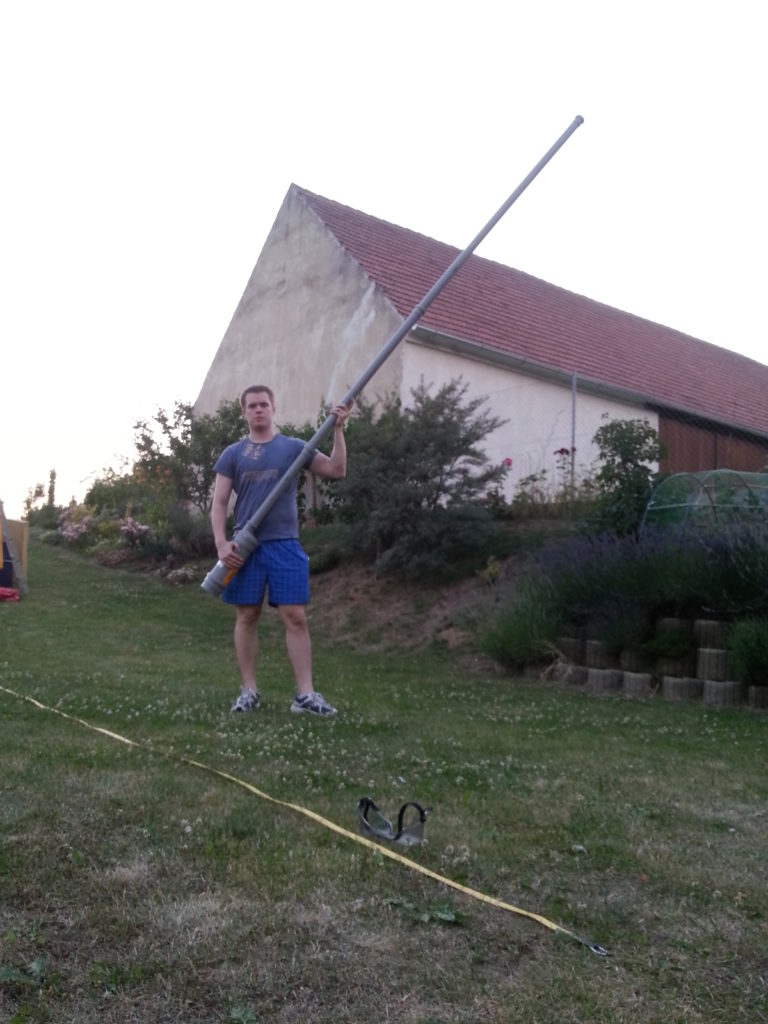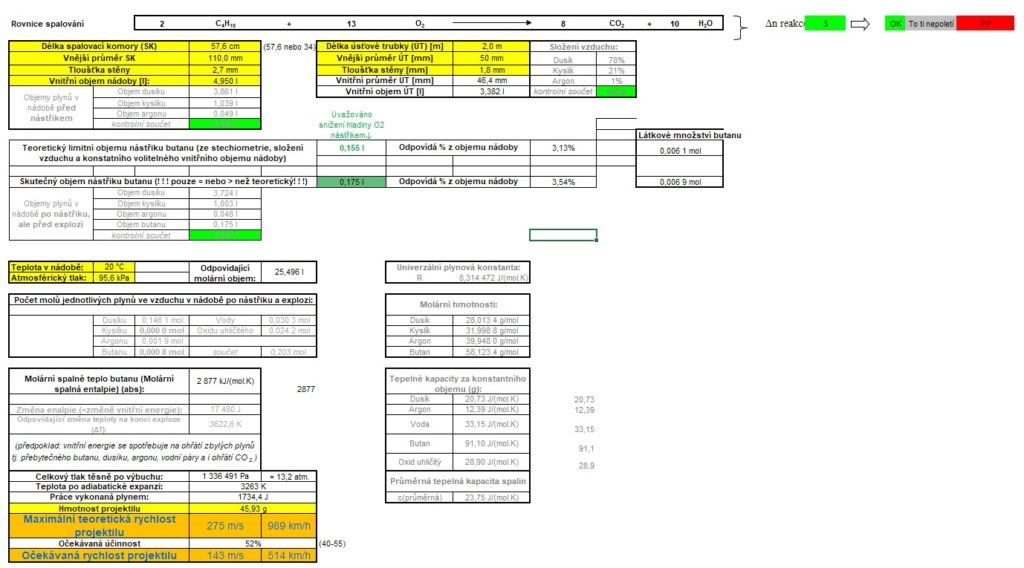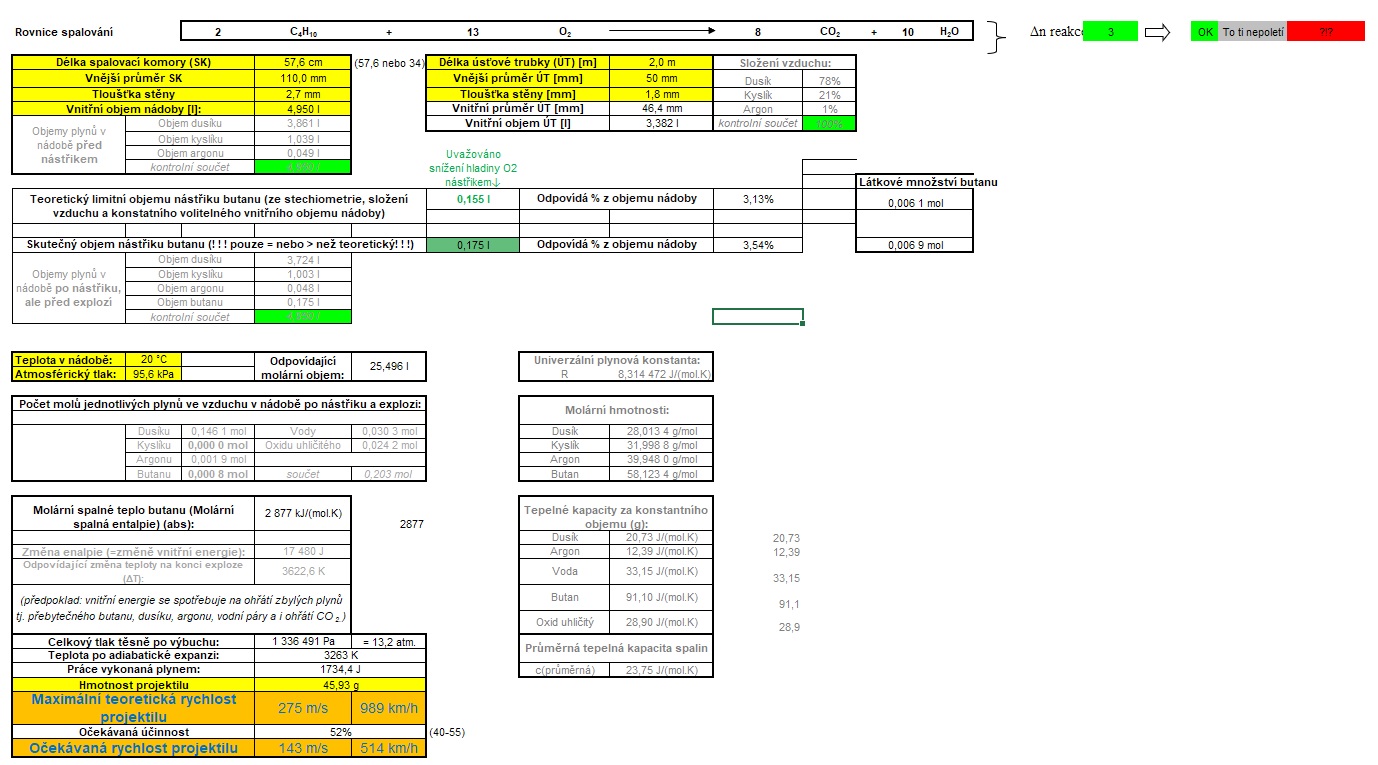In the summer of 2015, I decided to embark on another project, a golf cannon. In the meantime, I saw a lot of videos in which someone showed a cannon powered mostly by propane-butane or hair spray. Most often, the projectile was a potato fed into the mouth of a cannon. Of course, there were those who used other ammunition instead of potatoes – such as golf balls. And because aerodynamics have always been of interest to me, just like chemistry and physics, I have decided to build such a gun.

Actually, the cannon was made of connected tubes, so I could easily optimize the speed of the projectile.
And why golf balls? I can’t say I was a golfer. I’ve never really played golf before, but the ball golf physics has always attracted me. In addition, the golf ball has the interesting feature that it flies tens of percent further than would normally be the case for a smooth ball.
I used to try to blow balls with a seventh iron and my longest shot was 207 m. I always wanted to try the driver because it is longer and has better characteristics for the shot, so the ball would fly significantly further. But we did not have it in our rental and I did not play so often that it pays to buy it. Well, since I’ve been to Prague, I’ve never really gotten to it. But I wanted to try to look like this 300m “shot” and the gun came to me as an interesting project for that time. So it was my goal – just somehow detonated the golf ball at least 300m away.
At first I needed to decide what principle I would do. I’ve considered two basic options. Either hitting the compressed air, or the gun on the combustion principle.
The compressed-air drive came as the best option, as the projectile speed can be easily scaled and high muzzle velocities achieved. All you have to do is set the pressure in the container correctly. But after a thorough analysis, I had to leave the compressed-air drive because there would be a lot of equipment and equipment too expensive.
The second option was a cannon for combustion. A little gaseous hydrocarbon in the combustion chamber, ignition and subsequent explosion creates enough hot gas to fire an unhappy project. Sure, it could. And what to use as a fuel?
In almost all the videos they used hairspray or similar burners at that time. But that didn’t seem very good to me, because, besides butane, hairsprays also contain other ingredients that would not only reduce the effectiveness of the cannon, but would eventually clog it. As an alternative, I chose a high-energy, readily available, cheap yet clean hydrocarbon – butane. It does not cost much, but it provides good performance, can be easily found and dosed well. Although such hydrogen would also not be difficult to get, the combustion is very clean and would provide significantly better results, but it would also break any container I would put it into when it explodes. I wanted to make everything as simple as possible and only plastic came into consideration.
The question was, what parameters should be optimized and to what values. I have identified the three most important ones:
- cannon mouth length,
- combustion chamber size,
- and the amount of fuel in the combustion chamber.
To easily optimize these parameters, I created the following sheet in Excel (sample). I ordered the chemical composition of the propellant, which is simple for butane, the combustion heat and other data, and gained the speed value. I found the efficiency out of the effectiveness of the firearms found on the Internet. In my case, it was a little higher, probably due to the absence of rotational charge movement and less thermal conductivity of the walls than the classic firearm.

And what were the results of off-road speed?
The actual average speed of the ball on the 10 m track ranged from 350 to about 500 km / h (depending on the configuration and also the sealing around the ball – the tube was about 4 mm larger than the ball itself. I used paper to seal) for sealing). From a program to calculate oblique litter with air resistance, I deduced that with regard to speed reduction due to air resistance, the muzzle velocities were about 3-5% higher than average.
And what about the range?
Well, I tried that too. But the biggest problem was finding the balls at all. It was about 330 m from the foundations. 🙂
Greetings Lukáš Kolík, author
8.5.2019
Let’s get going
If you are interested in this kind of project or one of the calculators, please contact me for your own project and we will come up with something. I will answer.
Note: This article was not corrected from it’s original Czech version
